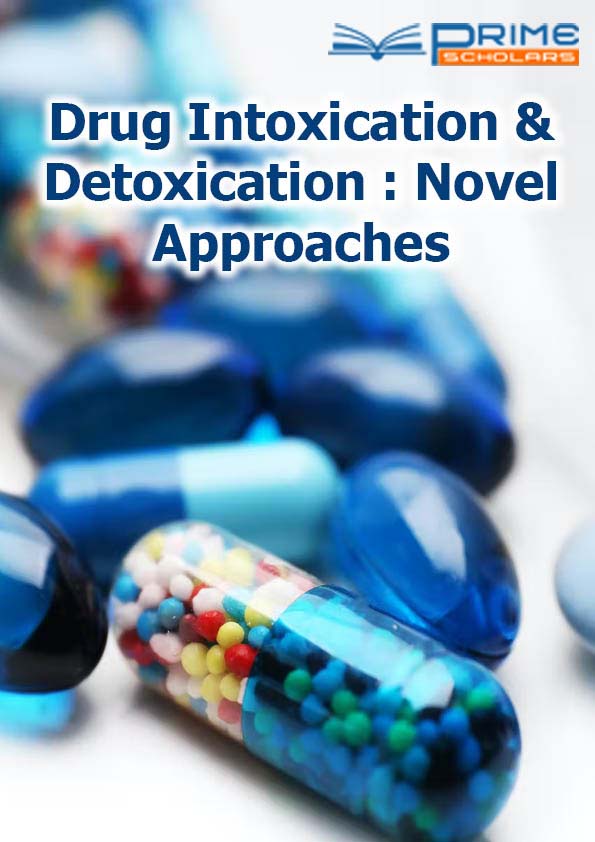Commentary - (2023) Volume 4, Issue 3
Inhaling the Future: The Urgent Need to Address Drug Inhalation
Duce Salinger*
Department of Drugs, Moscow State University, Russia
*Correspondence:
Duce Salinger,
Department of Drugs, Moscow State University,
Russia,
Email:
Received: 30-Aug-2023, Manuscript No. DIDNA-23-17912;
Editor assigned: 01-Sep-2023, Pre QC No. DIDNA-23-17912 (PQ);
Reviewed: 15-Sep-2023, QC No. DIDNA-23-17912;
Revised: 20-Sep-2023, Manuscript No. DIDNA-23-17912 (R);
Published:
27-Sep-2023, DOI: 10.36648/DIDNA 4.3.23
Description
The use of inhaled drugs, a practice that often lurks in the shadows
of the broader drug abuse landscape, is a growing concern
that warrants attention. As society grapples with the opioid crisis,
marijuana legalization, and other high-profile drug issues,
the dangers associated with drug inhalation often go underreported
and misunderstood. In this commentary, we shed
light on the practice of drug inhalation, its risks, and the need
for a comprehensive response. Drug inhalation, also known as
“huffing” or “sniffing,” refers to the act of inhaling chemical
substances to achieve a psychoactive effect. These substances
can range from everyday household products like glue, paint
thinner, aerosol sprays, and gasoline to volatile chemicals like
nitrous oxide, also known as “laughing gas.” The appeal of inhalants
lies in their accessibility, low cost, and the misconception
that they are relatively less dangerous than other illicit
substances. However, the risks associated with inhalants are
both severe and immediate. One of the most alarming aspects
of drug inhalation is the prevalence of its use among young
people. Adolescents and teenagers are particularly vulnerable
to experimenting with inhalants due to their accessibility, the
lack of a social stigma, and the misconception that they are
a safe way to get high. What makes this practice even more
concerning is that inhalant abuse is often a gateway to more
serious drug use, potentially leading to a cycle of addiction and
long-term health consequences. The effects of inhalants on the
human body are rapid, typically lasting only a few minutes. Users
may experience a range of short-lived sensations, including
euphoria, dizziness, hallucinations, and a sense of detachment
from reality. However, these fleeting moments of pleasure
come at an enormous cost. The risks associated with inhalant
use include nausea, vomiting, disorientation, loss of consciousness,
seizures, and, in the worst cases, fatal heart arrhythmias
or asphyxiation due to the displacement of oxygen in the lungs.
Efforts to combat drug inhalation must also include the development
of effective treatment and support systems. Inhalant
addiction often co-occurs with underlying mental health issues,
and comprehensive care is crucial to help individuals break free
from the cycle of abuse. Access to appropriate treatment resources
should be expanded, ensuring that those affected receive
the help they need. The issue of drug inhalation is not
confined to a single geographic region. It is a global concern,
and in many countries, particularly in areas where resources
for addiction treatment are scarce, addressing inhalant abuse
presents an even greater challenge. International collaboration
is crucial to sharing best practices and tackling this issue comprehensively.
Drug inhalation is a practice that poses a hidden danger to individuals,
families, and communities. To address this issue effectively,
it is imperative that we raise public awareness, develop
and expand prevention programs, increase access to treatment,
and tighten regulations on substances commonly abused
through inhalation. By shining a light on this often-overlooked
problem, we can begin to reduce its impact and create safer
and healthier environments where individuals can thrive without
the risks associated with drug inhalation. Ignoring this issue
is not an option; it’s time to take action and protect our most
vulnerable members of society.
Acknowledgement
None.
Conflict Of Interest
The author’s declared that they have no conflict of interest.
Citation: Salinger D (2023) Inhaling the Future: The Urgent Need to Address Drug Inhalation. Drug Intox Detox: Novel Approaches.
4:23.
Copyright: © 2023 Salinger D. This is an open-access article distributed under the terms of the Creative Commons Attribution
License, which permits unrestricted use, distribution, and reproduction in any medium, provided the original author and source
are credited.
